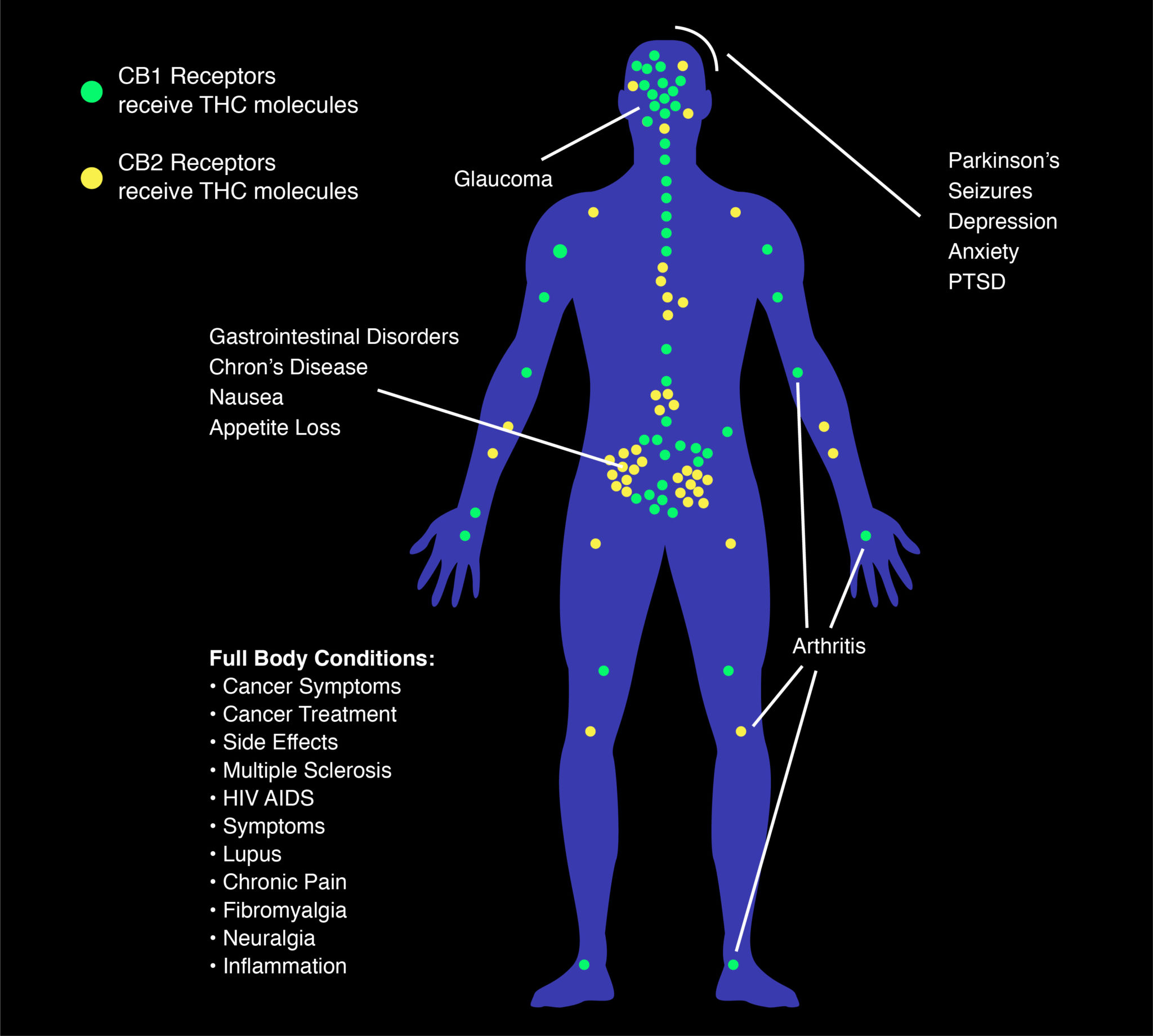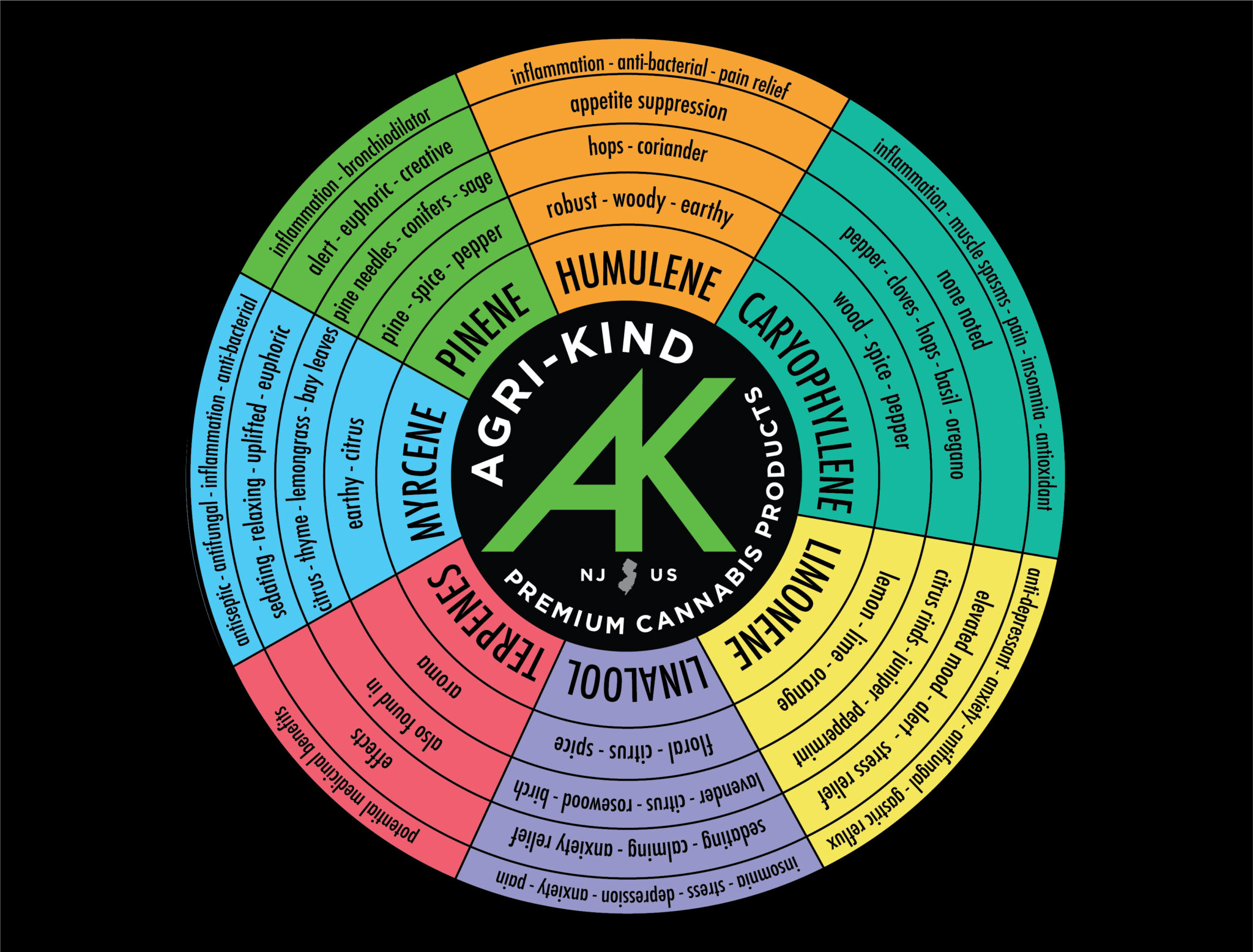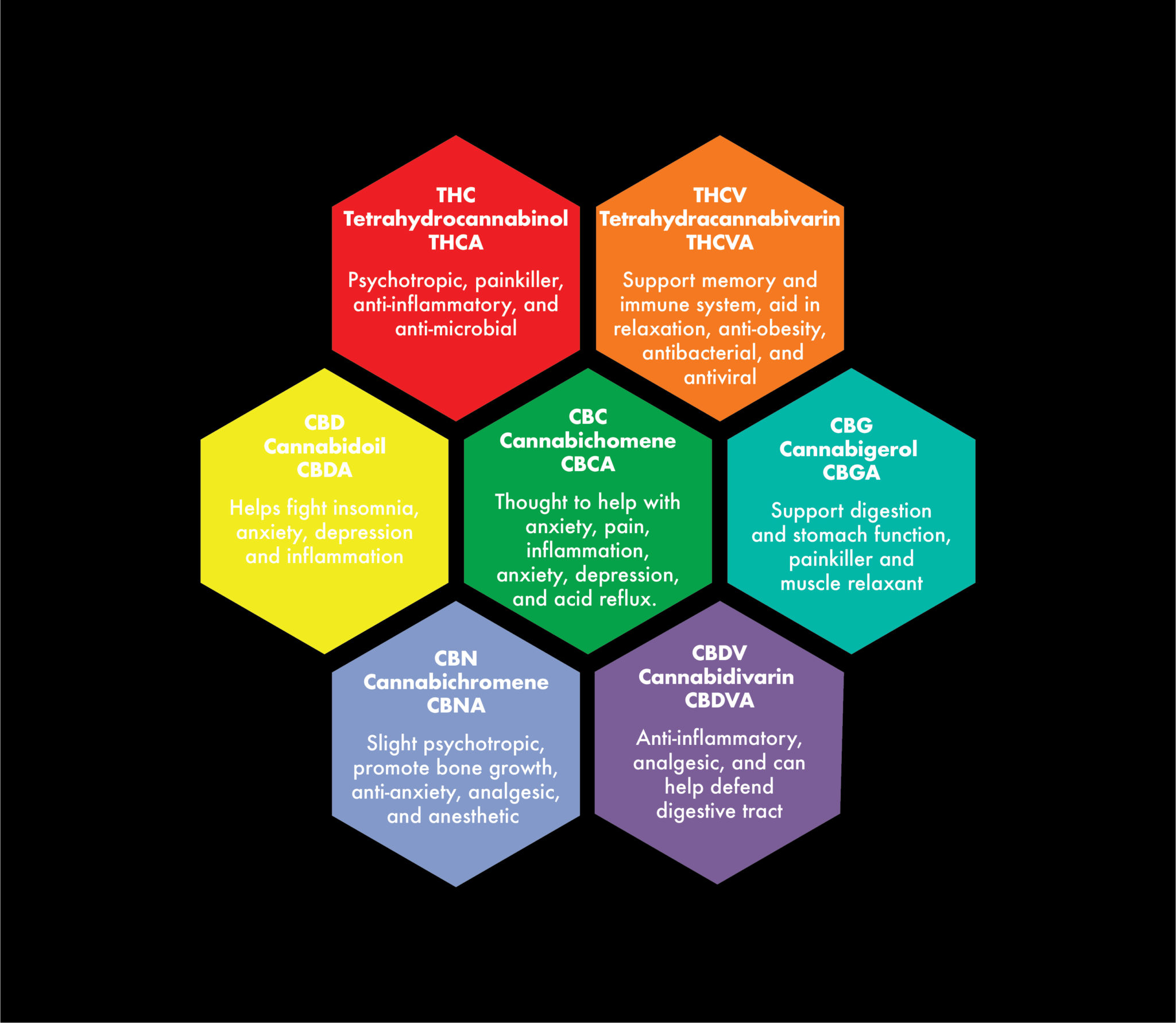Cannabinoids are the chemical compounds secreted by cannabis flowers that provide relief to an array of symptoms including pain, nausea, anxiety and inflammation. Cannabinoids work by imitating compounds our bodies naturally produce, called endocannabinoids which activate to maintain internal stability and health.
When cannabis is consumed, cannabinoids bind to receptor sites throughout our brain (CB-1) and body (CB-2). Different cannabinoids have different effects depending on which receptors they bind to, i.e. Tetrahydrocannabinol (THC) binds to receptors in the brain whereas (CBN) Cannabinol has a strong affinity for CB-2 receptors located throughout the body. Different types and levels of relief are achievable depending on the cannabis products and their cannabinoid profiles.
Cannabis contains more than 85 types of cannabinoids, many of which have potential for medical use. Specific products and strains have been developed to deliver different cannabinoids to help treat certain symptoms.
The Endocannabinoid system is a network of cannabinoid receptors scattered throughout the human body. Receptors can be found in the most important parts of our bodies, including the lungs, brain, liver and many others. Endocannabinoids bind to these receptors (CB1 and CB2) and can help keep the body in homeostasis.
The three key components of the Endocannabinoid System are:
- Cannabinoid Receptors: Found on the surface of cells
- Endocannabinoids: Small molecules that activate cannabinoid receptors
- Metabolic Enzymes: Break down endocannabinoids after use

Trichomes are glands on the cannabis plant that secrete the cannabinoids which have therapeutic and euphoric effects on the mind and body. Trichomes also produce terpenes. Terpenes are aromatic oils that color cannabis varieties with distinctive flavors like citrus, berry, pine, etc.
Over 100 different terpenes have been identified in the cannabis plant and every strain tends toward a unique terpene composition. The diverse palate of cannabis flavors is accredited to its terpene composition. Terpenes’ ability to interact synergistically with other compounds in the plant, like cannabinoids, is not only fascinating but impressive.
Each terpene is associated with unique effects. Some promote relaxation and stress-relief while others promote focus and acuity. However, the effect profile of a specific terpene may change in the presence of another compound. This phenomenon is known as the entourage effect.

Class of diverse chemical compounds that alter neurotransmitter release in the brain.
Cannabinoids are the chemical compounds secreted by cannabis flowers that provide relief to an array of symptoms including pain, nausea, anxiety and inflammation. Cannabinoids work by imitating compounds our bodies naturally produce, called endocannabinoids which activate to maintain internal stability and health.
When cannabis is consumed, cannabinoids bind to receptor sites throughout our brain (CB-1) and body (CB-2). Different cannabinoids have different effects depending on which receptors they bind to, i.e. Tetrahydrocannabinol (THC) binds to receptors in the brain whereas (CBN) Cannabinol has a strong affinity for CB-2 receptors located throughout the body. Different types and levels of relief are achievable depending on the cannabis products and their cannabinoid profiles.
Cannabis contains more than 85 types of cannabinoids, many of which have potential for medical use. Specific products and strains have been developed to deliver different cannabinoids to help treat certain symptoms.

